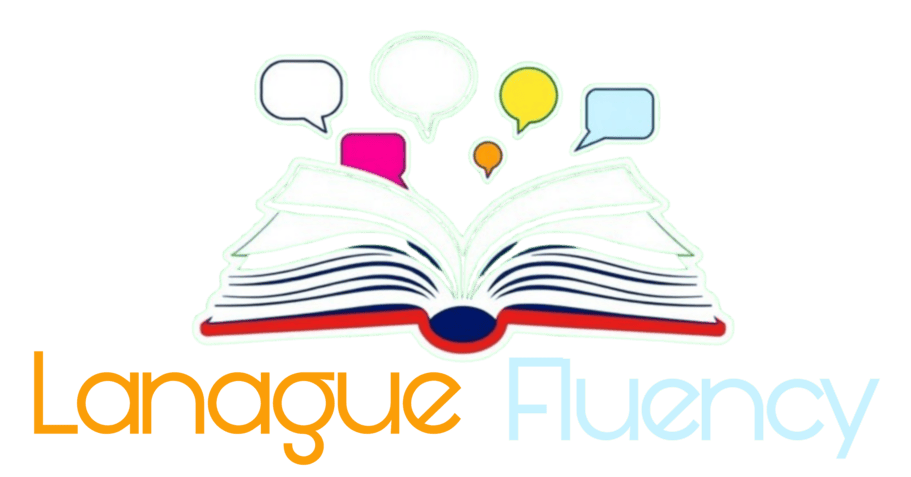Learning Romance Languages
Embarking on the journey of learning a Romance language opens up a world of rich linguistic history and interconnected cultures. These languages, stemming from Latin roots, include popular options such as Spanish, French, Italian, and Portuguese. With their melodic cadence and similarities in vocabulary and grammar structures, learners often find a sense of familiarity and ease in navigating through these linguistic landscapes.
One of the key advantages of learning a Romance language is the wide availability of learning resources and opportunities for practice. From language exchange meetups to online courses and interactive apps, learners can immerse themselves in the language through various mediums. Additionally, the prevalence of native speakers and cultural events allows learners to engage authentically with the language, enhancing their comprehension and fluency over time.
Learning Germanic Languages
Germanic languages are a diverse group that includes English, German, Dutch, and Swedish, among others. Learning a Germanic language can be both rewarding and challenging due to their unique grammar structures and vocabulary. Understanding the similarities and differences between these languages can aid in the learning process and provide a solid foundation for language acquisition.
One key aspect of learning Germanic languages is mastering their pronunciation. While some sounds may be similar to English, others can be quite distinct and require practice to pronounce accurately. Additionally, paying attention to intonation and accent patterns can play a crucial role in effectively communicating in these languages.
Pronunciation Challenges in Romance Languages
Pronunciation in Romance languages can pose significant challenges for learners, particularly for those not familiar with the phonetic rules of these languages. One common difficulty is mastering the various vowel sounds that exist in languages like Spanish, French, Italian, and Portuguese. For example, distinguishing between the vowels “e” and “i” in Spanish or between the nasal sounds in French can be tricky for non-native speakers. Additionally, the placement of stress in words can also be a point of confusion, as the stress often falls on different syllables compared to English.
Another common pronunciation challenge in Romance languages is the correct articulation of consonant sounds. For instance, the rolled “r” in Spanish or Italian may be difficult for learners whose native languages lack this sound. Furthermore, some languages, like French, have silent letters that can alter the pronunciation of words significantly. Mastering these nuances of pronunciation is crucial for effective communication and comprehension in Romance languages.
Pronunciation Challenges in Germanic Languages
Pronunciation in Germanic languages can often pose a unique set of challenges for learners due to the array of distinct sounds and phonetic variations present in these languages. For example, the pronunciation of certain consonants, such as the guttural “ch” sound in German or the rolled “r” in Dutch, can be particularly tricky for non-native speakers to master. Additionally, the subtle differences in vowel sounds in languages like Swedish or Norwegian can also present difficulties for those unfamiliar with these phonetic nuances.
Another common pronunciation challenge in Germanic languages is the emphasis placed on stress patterns within words. For instance, in languages like English and German, the stress placement within a word can completely alter its meaning or connotation. Mastering these stress patterns and intonations is crucial for achieving fluency and clear communication in Germanic languages. Furthermore, the presence of diphthongs and unique sound combinations further adds to the complexity of pronunciation in languages such as Icelandic or Faroese.
Grammar Complexity in Romance Languages
One aspect that sets Romance languages apart is their intricate grammar structures. Verbs are conjugated based on the subject, leading to a wide array of verb forms that must be memorized by language learners. Additionally, Romance languages often feature gendered nouns, meaning that every noun is assigned a gender (masculine or feminine) which can affect the forms of adjectives and articles used with them.
Another challenging aspect of grammar in Romance languages is the use of different verb tenses and moods to convey subtle nuances in meaning. This complexity adds depth and richness to the language but can be daunting for those just starting to learn. Beyond the verb conjugations, the order of words in a sentence can also vary, requiring learners to pay close attention to the structure and syntax of the language.
Grammar Complexity in Germanic Languages
The grammar of Germanic languages can present unique challenges for language learners due to its complex system of noun declensions and verb conjugations. In languages such as German and Dutch, nouns can change form depending on their grammatical role in a sentence, known as case. This feature requires learners to memorize multiple forms for each noun, adding a layer of complexity to sentence structure and word order.
Additionally, verb conjugations in Germanic languages can be intricate and varied, with verbs changing form based on tense, mood, aspect, and person. This aspect of grammar often requires learners to pay close attention to verb endings and patterns, as well as understanding irregular verb conjugations. The need for precision in verb usage can make mastering the grammar of Germanic languages a challenging but rewarding endeavor for language enthusiasts.
Common Vocabulary in Romance Languages
One notable characteristic of Romance languages is the vast amount of common vocabulary shared among them. This can be traced back to their shared Latin roots, as well as historical interactions and influences. Words related to everyday items, emotions, and concepts tend to have similarities across languages like Spanish, French, Italian, Portuguese, and Romanian. For example, words like “amor” (love), “casa” (house), and “feliz” (happy) can be easily understood by speakers of different Romance languages due to their similarities.
Additionally, the influence of other languages on Romance vocabulary is evident through borrowings from languages such as Arabic, Germanic, and Greek. These loanwords have enriched the lexicon of Romance languages, adding depth and nuance to their shared vocabulary. As a language learner, recognizing these commonalities can be advantageous, as it can facilitate the acquisition of multiple Romance languages simultaneously and enhance communication skills in a broader linguistic context.
Common Vocabulary in Germanic Languages
Germanic languages share a considerable amount of common vocabulary among them, allowing learners to identify similarities across languages such as German, English, Dutch, and Swedish. Words related to family members, basic emotions, numbers, and everyday objects are often recognizable in different Germanic languages due to their shared linguistic roots. For instance, words like “mother,” “father,” “sister,” and “brother” have similar counterparts in various Germanic languages, making it easier for learners to grasp basic vocabulary in multiple languages simultaneously.
Furthermore, common verbs and adjectives found in Germanic languages bear similarities that aid language learners in expanding their vocabulary efficiently. Verbs like “to be,” “to have,” and “to do” have recognizable forms across Germanic languages, allowing learners to focus on mastering usage rather than memorizing entirely new vocabulary for the same concepts. Similarly, adjectives like “big,” “small,” “happy,” and “sad” share resemblances in spelling and pronunciation across the Germanic language family, streamlining the learning process for those interested in acquiring proficiency in multiple related languages.
Cultural Influences on Romance Languages
French, Spanish, Italian, Portuguese, and Romanian are among the most widely spoken Romance languages in the world. Each of these languages has been significantly influenced by the cultures and societies that have shaped their development over the centuries. The influence of the Roman Empire, as well as the subsequent spread of Christianity, has left a lasting impact on the vocabulary, grammar, and even the writing systems of these languages.
Additionally, the Arab conquest of the Iberian Peninsula in the 8th century left a profound impact on Spanish and Portuguese, particularly in terms of vocabulary related to science, mathematics, and architecture. The Moorish influence can still be seen in the architectural marvels of cities like Granada and Seville. Furthermore, the colonization of the Americas by Spain and Portugal led to the introduction of indigenous vocabulary into these languages, further enriching their lexicons and reflecting the diversity of cultures that have contributed to their development.
Cultural Influences on Germanic Languages
Germanic languages have been profoundly influenced by various cultures throughout history. One of the major influences on these languages is the Germanic tribes themselves, whose migrations and conquests shaped the linguistic landscape of Europe. The interactions between these tribes and other groups, such as the Romans, Vikings, and Normans, also left a lasting impact on the development of Germanic languages.
Furthermore, the spread of Christianity in the medieval period brought Latin influences into Germanic languages, particularly in terms of vocabulary related to religion and education. The rise of the Holy Roman Empire also played a significant role in shaping the cultural and linguistic aspects of Germanic languages. Additionally, the influence of trade and commerce with other regions led to the borrowing of words from languages such as French, Dutch, and Italian, enriching the vocabulary of Germanic languages.
Language Learning Resources for Romance Languages
When it comes to learning a Romance language, having the right resources at your disposal can significantly aid your language acquisition journey. Online platforms such as Duolingo, Babbel, and Rosetta Stone offer interactive lessons and exercises to help you grasp the fundamentals of languages like Spanish, French, Italian, and Portuguese. These resources often incorporate reading, writing, listening, and speaking activities to cater to different learning styles.
For those seeking a more structured approach to learning a Romance language, traditional textbooks and workbooks can provide a comprehensive overview of grammar rules, vocabulary, and cultural insights. Additionally, language exchange programs and online forums offer opportunities to practice speaking with native speakers and receive feedback on your progress. Immersing yourself in authentic resources such as music, movies, and books in the target language can also enhance your language skills and deepen your understanding of the cultural context in which the language is spoken.
Language Learning Resources for Germanic Languages
If you are looking to learn a Germanic language, there are a variety of resources available to assist you in your language learning journey. Online platforms such as Duolingo, Babbel, and Rosetta Stone offer interactive lessons and exercises to help you practice vocabulary, grammar, and pronunciation. These resources are convenient and can be accessed anytime, anywhere, making it easier for you to incorporate language learning into your daily routine.
In addition to online resources, textbooks and language learning apps like Anki and Memrise can also be valuable tools in mastering a Germanic language. Textbooks provide structured lessons and explanations of grammar rules, while apps offer spaced repetition techniques to help reinforce vocabulary retention. Furthermore, language exchange programs and conversation practice with native speakers can greatly enhance your language skills and provide real-world application of what you have learned from other resources.
Dialects and Variations in Romance Languages
One fascinating aspect of Romance languages is the wide array of dialects and variations that exist within this language family. From the melodic lilt of Italian spoken in the rolling hills of Tuscany to the rhythmic cadence of Brazilian Portuguese in the bustling streets of Rio de Janeiro, each region offers its unique linguistic flavor. These dialectal nuances often stem from historical influences, such as the interaction with other languages or the geographic isolation of certain communities.
Furthermore, the diversity of dialects and variations within Romance languages can also be attributed to sociocultural factors. For instance, the status of a particular dialect within a society, whether it is perceived as prestigious or stigmatized, can impact its continued use and evolution. Additionally, migration patterns and urbanization have led to the emergence of new hybrid dialects that blend elements from different regions, creating a rich tapestry of linguistic diversity within the Romance language family.
Dialects and Variations in Germanic Languages
Dialects and variations in Germanic languages can vary significantly across different regions and countries where these languages are spoken. For instance, in German, there are distinct dialects spoken in regions such as Bavaria, Swabia, and Saxony, each with its own unique characteristics in terms of pronunciation, vocabulary, and grammar. These dialectal differences can sometimes pose challenges for learners trying to navigate the linguistic landscape within the German-speaking world.
Similarly, in English, variations in dialects can be observed in different English-speaking countries such as the United Kingdom, the United States, Australia, and Canada. These variations can be seen in the differences in vocabulary, pronunciation, and even grammar rules. For example, British English and American English have diverged in terms of certain spelling conventions and word choices, reflecting the historical and cultural influences that have shaped these linguistic variations.
Writing Systems in Romance Languages
Writing systems in Romance languages vary widely, reflecting the influences of their diverse linguistic histories. For instance, Spanish, French, and Italian use the Latin alphabet, which consists of 26 letters, while Romanian incorporates additional characters with diacritics. These marks modify the pronunciation of certain letters, adding complexity to the written language.
In contrast, Portuguese employs the Latin alphabet with modifications such as acute accents, circumflexes, and tildes, distinguishing it from other Romance languages. Additionally, some Romance languages, like Catalan and Galician, have their own unique writing systems that are derived from Latin but include specific diacritics and symbols. Overall, the writing systems in Romance languages not only reflect the phonetic nuances of each language but also showcase their cultural identities.
• Spanish, French, and Italian use the Latin alphabet with 26 letters
• Romanian incorporates additional characters with diacritics for modified pronunciation
• Portuguese uses acute accents, circumflexes, and tildes in its writing system
• Catalan and Galician have unique writing systems derived from Latin with specific diacritics and symbols
Writing Systems in Germanic Languages
Germanic languages utilize a variety of writing systems across their different branches. One of the most common scripts employed is the Latin alphabet, which was introduced to many Germanic-speaking regions through Christian missionaries during the medieval period. Modern English, German, Dutch, Swedish, and Danish, among others, all use variations of the Latin script with additional letters or diacritics to accommodate unique phonetic sounds.
In contrast, languages such as Icelandic and Faroese have maintained the use of runic scripts, which were prevalent among Germanic-speaking communities before the widespread adoption of the Latin alphabet. These runic characters have historical significance and are sometimes incorporated into modern writing for decorative or cultural purposes. Additionally, the Frisian languages, spoken in parts of the Netherlands and Germany, have their own unique writing system known as the Frisian alphabet, which derives from the Latin script but includes additional characters for specific sounds present in Frisian phonology.
Verb Conjugations in Romance Languages
To master Romance languages, understanding and properly using verb conjugations is essential. These languages, derived from Latin roots, exhibit a rich variety of verb forms that change depending on the subject, tense, mood, and aspect. Each verb in Romance languages typically belongs to one of three main conjugations: -ar verbs, -er verbs, and -ir verbs. These verbs undergo specific changes in their endings to indicate different subjects such as I, you, he/she, we, and they. Additionally, verb conjugations in Romance languages also consider factors like formality, familiarity, and politeness, adding depth and nuance to communication.
The complexity of verb conjugations in Romance languages can be both challenging and rewarding for language learners. Regular practice and exposure to various conjugation patterns are key to internalizing these grammatical structures. Understanding the specific rules governing verb endings for different subjects and tenses is crucial for expressing thoughts, actions, and emotions accurately in Romance languages. By grasping the intricacies of verb conjugations, language learners can enhance their fluency and effectively navigate conversations in languages such as Spanish, French, Italian, Portuguese, and Romanian.
Verb Conjugations in Germanic Languages
Germanic languages feature intricate verb conjugation systems that can be challenging for non-native speakers to master. Verbs in these languages undergo changes based on tense, mood, aspect, and person, adding layers of complexity to language learning. Each verb typically has several conjugated forms, requiring learners to memorize various endings and irregular patterns.
The verb conjugation systems in Germanic languages also often include strong and weak verbs, further complicating the language learning process. Strong verbs undergo significant vowel changes in their conjugated forms, while weak verbs follow more regular patterns. Understanding and correctly applying these conjugation rules is essential for fluency in these languages.
Gendered Nouns in Romance Languages
In Romance languages, gendered nouns play a significant role in shaping the structure of sentences and conversational interactions. French, Spanish, Italian, Portuguese, and other Romance languages assign either masculine or feminine genders to nouns, impacting the agreement of articles, adjectives, and pronouns. For example, in Spanish, “la casa” (the house) is feminine, while “el libro” (the book) is masculine. This grammatical feature adds depth and nuances to the language, requiring learners to internalize these gender assignments to communicate effectively.\n
Mastering gendered nouns in Romance languages can be a challenging yet rewarding aspect of language learning. It not only enhances linguistic proficiency but also provides insights into the cultural and historical influences that have shaped these languages over centuries. Understanding the gender of nouns in Romance languages allows learners to express themselves more accurately and fluently while developing a deeper appreciation for the intricate nature of language.
Word Order in Germanic Languages
Germanic languages are known for their flexible word order, allowing for variations in sentence structure to convey different meanings or emphasis. In these languages, the basic word order is typically subject-verb-object (SVO). For example, in English, the sentence “I (subject) eat (verb) pizza (object)” follows this standard SVO order. However, Germanic languages like German and Dutch also allow for variations in word order, such as the verb-subject-object (VSO) structure or object-verb-subject (OVS) arrangement, depending on the context and emphasis of the sentence.
The flexibility in word order in Germanic languages can sometimes lead to confusion for language learners, as the emphasis or focus of a sentence may change depending on the order of the words. These languages often rely on case markers or word endings to indicate the grammatical function of words in a sentence, allowing for more freedom in word order. Despite the variations possible in word order, Germanic languages still maintain a general preference for the SVO structure in declarative sentences, with other arrangements used for specific contexts such as questions, commands, or emphasis.



